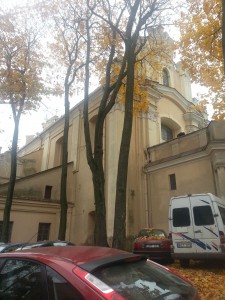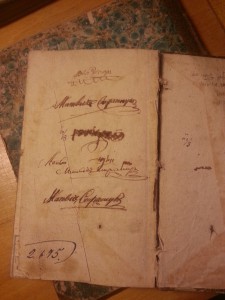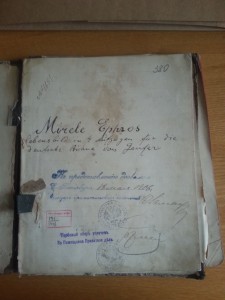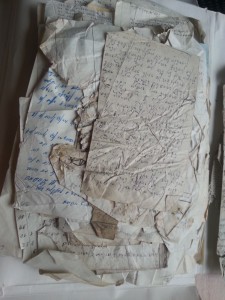Reuniting YIVO’s Prewar Collections: Digitally

and safeguarded YIVO books and documents
from the Soviet authorities, today the
Bibliographic Center of the Lithuanian National
Library.
by ROBERTA NEWMAN
During World War II, the collections of YIVO and other Jewish institutions in Europe were systematically looted by the Nazis under the direction of the Einsatzstab Rosenberg. The Nazis employed a small group of Jews to sort books and documents in YIVO, which was then located in Vilna (Wilno, Poland; present day Vilnius, Lithuania). These men and women, who included poets Abraham Sutzkever and Shmerke Kaczerginski, risked their lives to hide as many of the treasures as they could inside the Vilna Ghetto and elsewhere, with non-Jewish friends. The materials included artifacts from Vilna and surrounding communities, as well as YIVO’s own large archival and library collections. But some materials were sent off to Germany, to the Institute for the Study of the Jewish Question in Frankfurt. The material sent to Germany was recovered after the war with the help of the U.S. Army, and shipped to YIVO, by then reestablished in New York by members of its leadership who had escaped, and by local scholars and activists. Other Jewish treasures were lost forever, sent off by the Nazis to be shredded in paper mills.

his private collection.
Some of the materials hidden in Vilna were recovered after the war, but were then again plundered and partially destroyed, this time by the Soviets. Once again, a few courageous men and women managed to hide some of the documents and books and smuggle them out to YIVO in New York. It was feared that all the rest were lost forever.
In 1988, however, YIVO received dramatic news: some of the materials long thought destroyed by the Nazis and Soviets had been hidden by Lithuanian librarian Antanas Ulpis for 40 years in the basement of a Catholic church that had been converted by the Soviets into the Lithuanian National Book Chamber. In the early 1990s, archival materials from this trove, such as documents and photographs, were transferred to the Lithuanian Central State Archives (LCSA), while books remained in the library, by then part of the Lithuanian National Library. Later in the 1990s, the Lithuanian government permitted the materials to travel for a limited time to YIVO in New York, where they were sorted, conserved, and photocopied. Under the terms of the agreement, the materials were then returned to Lithuania.

the Lithuanian Central State Archive: An early
manuscript edition of Jacob Gordin’s Yiddish
play, “Mirele Efros.”
YIVO, in cooperation with the National Library of Lithuania and the Lithuanian Central State Archives (LCSA), is developing a detailed plan for the digitization of its collections in Lithuania, including newly discovered materials at the LCSA. The project will also include the digitization of several hundred books from the famed Strashun Library that remain in Lithuania. In October, Executive Director Jonathan Brent, Head Librarian Lyudmila Sholokhova, and Director of Digital Initiatives Roberta Newman flew to Vilnius and met with officials of the National Library of Lithuania and the LCSA in order to finalize plans for the project and to survey the newly discovered archival documents.
The digitized documents and books will be made accessible to the public on the online Guide to the YIVO Archives, a planned new YIVO Library web site, and a dedicated web portal to the Vilna Collections, which will tell the dramatic story of the rescue and recovery of the books and documents in both English and Lithuanian. They will be joined online by the digital images from the Vilna collections that were brought to YIVO by the U.S. Army after the war.

conservation and processing before they can be
digitized.
YIVO is currently seeking funding for this multi-year, international initiative.